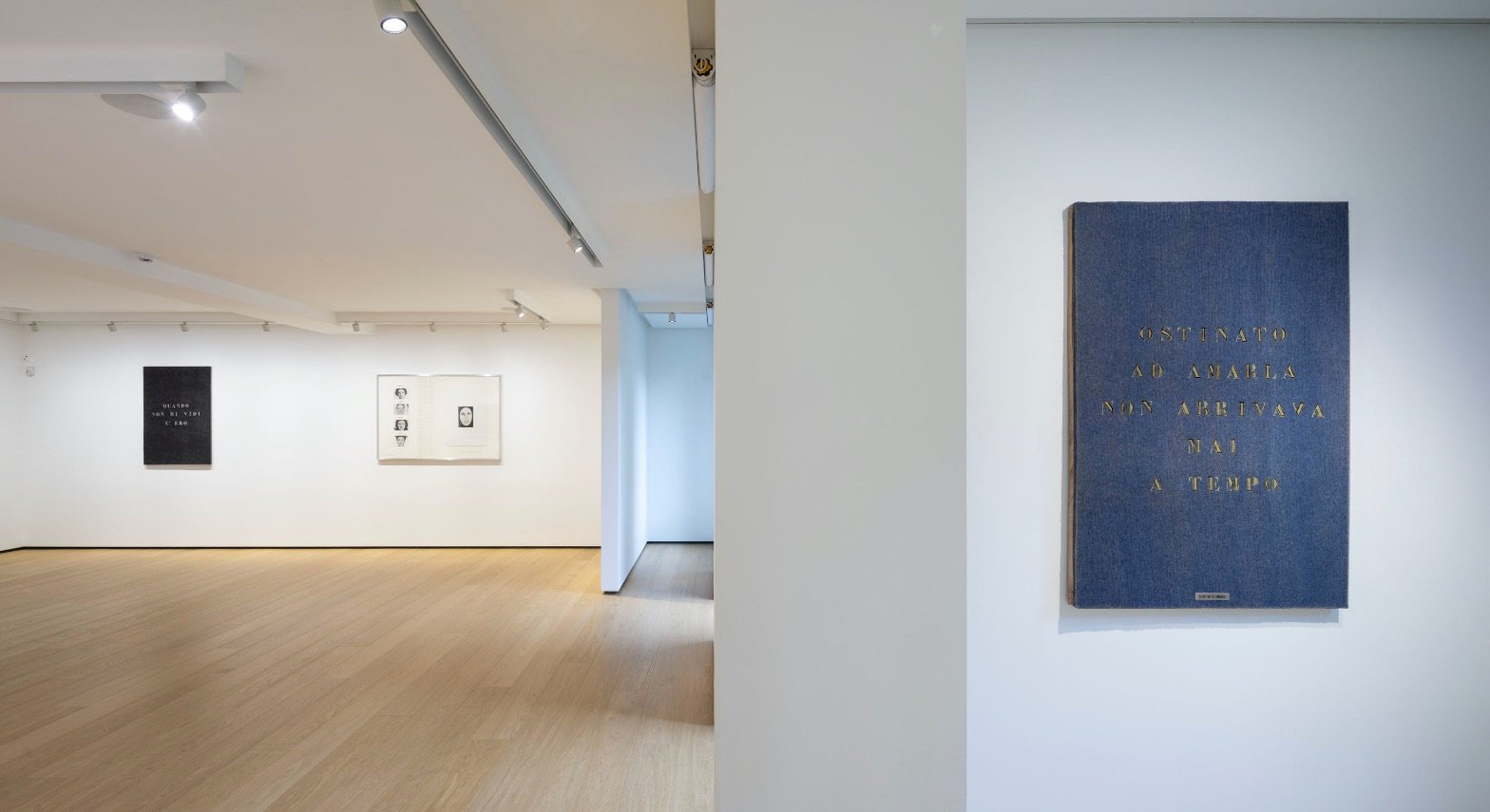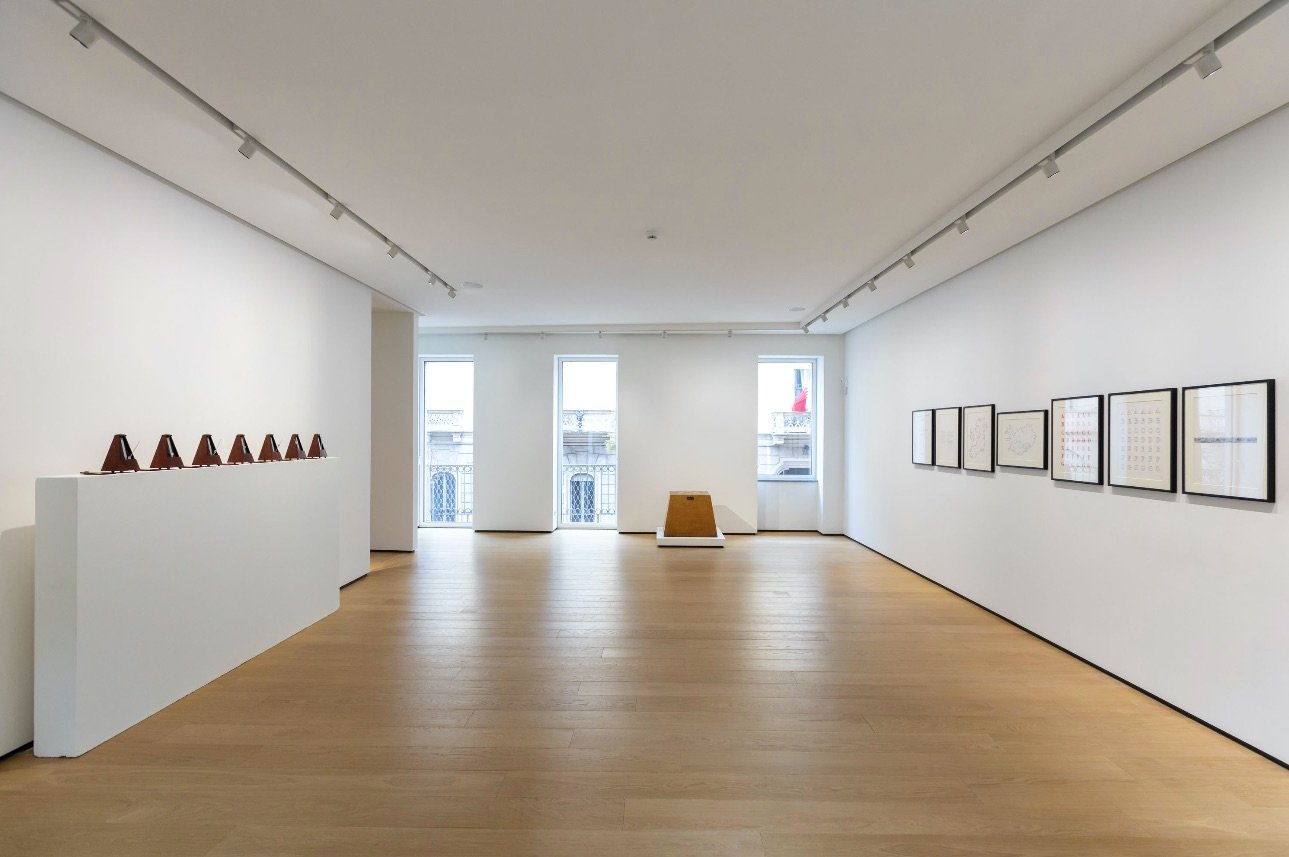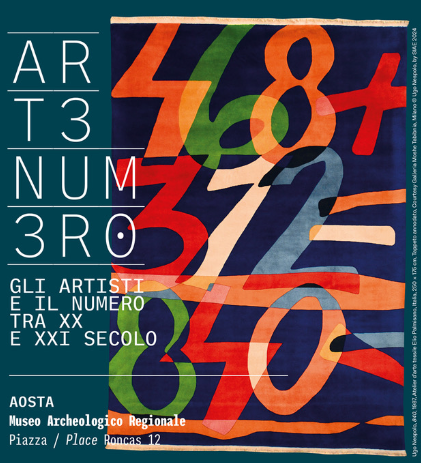Vincenzo Agnetti – Autoritratti Ritratti, Scrivere – Enrico Castellani Piero Manzoni
23.10.2019 – 18.01.2020
with performances by Italo Zuffi
ADDITIONAL VENUES
Cloisters of Sant’Eustorgio
Portinari Chapel
Paleochristian Cementery
Sala Capitolare
Piazza Sant’Eustorgio 3, 20122 Milan
Monday – Sunday, 10AM – 6PM
admission: €6, concession €4
“I write things, which are the basis for my works, which in turn spark other writings…” – Vincenzo Agnetti, Corriere della Sera, February 1972.
BUILDING, from October 23, 2019 to January 18, 2020, presents the exhibition Vincenzo Agnetti – Autoritratti Ritratti, Scrivere – Enrico Castellani Piero Manzoni, curated by Giovanni Iovane.
Divided into two sections – Self-portraits Portraits and Writing, the show focuses on a selection of the artist’s works that include not only his famous “felts”, but also many other pieces, including Identikit (1973), Autotelefonata (No) [Self call (No)] (1972) and Elisabetta d’Inghilterra [Elizabeth of England] (1976) – original experiments with the portrait genre – and his famous self-portrait Quando mi vidi non c’ero [When I saw myself I wasn’t there] (1971), along with his last, unfinished work Il suonatore di fiori [The Flowerplayer] (1982).
From the ’60s onwards Agnetti, who had forged an artistic partnership with Enrico Castellani and Piero Manzoni, contributed to the critical investigation of their work with his distinctive texts, mid way between critical analysis and poetry.
The section entitled Writing therefore presents a selection of artworks by Castellani and Manzoni connected to the research of Agnetti, starting from Litografia Originale [Original lithograph] (1968), which on one side has Castellani’s work and on the reverse shows a text and a diagram by Vincenzo Agnetti. Featured pieces by Piero Manzoni include his “tavole di accertamento” and “linee”, as well as works which pick up the portrait theme, including Base magica [Magic base] (1961), his clearly performative “living sculpture”.
Portrayal is an action: the Italian word for portrait – ritratto – derives from the Latin retrahĕre – to pull back. This “negative act” is something that Agnetti builds into his artistic practice, both linguistically and in a performative sense.
In his practice, which is based on a “negative” process – “writing – work – writing” – this act of pulling back plays a key role, in the sense that the artist removes or subtracts something, before giving it back.
The final section of the exhibition presents an extensive collection of documentary material, with texts and photographs that reveal the complexity of Agnetti’s “writing – work – writing” modus operandi, for whom the “writing – work” is something that differs from the Statements of the conceptual artists. From this point of view, a work like the self-portrait Quando mi vidi non c’ero [When I saw myself I wasn’t there] can be viewed as a speech act, to borrow a term used by the language philosopher John Langshaw Austin, the author of How to Do Things with Words (1962). In his “felts” series Agnetti devised an experimental approach in which the writing and the art work become performance, going beyond the limiting definition of “conceptual” art.
The exhibition also includes featured performances by Italo Zuffi, created for the occasion and designed to highlight the performative aspect of Agnetti’s work, eliciting a contemporary reflection on the concepts of portrait and translation.
Once again BUILDING has conceived a public extension of the exhibition, in the city of Milan.
Some of Vincenzo Agnetti’s most mystical works, such as Ritratto di Dio [Portrait of God] (1970) and Apocalisse [Apocalypse] (1970), will be exhibited in some settings of the Cloisters of Sant’Eustorgio.
A programme of lectures and seminars will accompany the exhibition.
The catalogue, published by BUILDING, will include texts by Giovanni Iovane, curator of the exhibition, Marco Meneguzzo, Gaspare Luigi Marcone, Rosalia Pasqualino di Marineo, Federico Sardella and Marco Senaldi, along with a previously unpublished interview with the artist by Tommaso Trini.
The exhibition was produced in collaboration with Archivio Vincenzo Agnetti, Fondazione Enrico Castellani and Fondazione Piero Manzoni, with the support of galleria Osart, Collezione La Gaia and various private collections.














